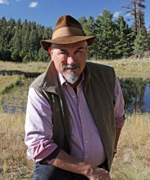 —Alan Dulaney
—Alan Dulaney
At 5:30 PM on January 31, Governor Ducey signed the joint resolution and associated bills to allow Arizona to sign on to the Drought Contingency Plan, hours before the Federal deadline. Champagne corks popped across the state. Done, or so we thought.
The next day the Bureau of Reclamation announced that done was not quite done, and several more steps had to be taken. BOR wants to see all the deals amongst the tribes, cities, and irrigation districts finalized before they will call it done. CAWCD counts 15 ancillary agreements amongst stakeholders that must be signed before the Arizona framework is viable, and thus acceptable. Work on those agreements proceeds at a feverish pace. There is considerable hope that all these agreements can be brought to completion.
California too was not off the hook. Three irrigation districts had provisionally approved the California framework, but put conditions on their approvals. The biggest of these, Imperial Irrigation and Drainage District, wants the last review and signature on the DCP after all the states have approved it, as well as the right to review any related Federal legislation. Biggest of all, Imperial wants $200 million for Salton Sea issues and mitigation of water shortages for Imperial farmers before it signs on. Those are huge asks. It is not at all clear how that situation can be brought to closure.
So the Commissioner filed a notice in the Federal register requesting the governors of the seven Colorado River Basin states to submit comments before March 4 on how to address the ongoing drought in order to prevent the collapse of the Colorado River system. Of course, if California and Arizona can complete their work to the satisfaction of BOR, the Commissioner will withdraw the call for comments. The Director of ADWR has noted that the outcome of asking seven states how to handle the Basin-wide drought is likely to result in fingers pointed at other states to take more of the shortage. That is not a collaborative outcome. In the end, the Commissioner may well have to exercise her broad powers, affirmed by the U.S. Supreme Court, to operate the system to lower risk to Lakes Mead and Powell. Ultimately, the only way to resolve the underlying structural problem is to bring all withdrawals in line with the supply that is actually available.
Still, it was good to see the leaders of the state standing behind Governor Ducey as he signed the necessary documents. It was a good moment. Getting that far, achieving the framework implementation plan and running it through the Legislature in record time, was indeed a major achievement. As Winston Churchill noted in a previous century, “It is not the beginning of the end, but it is the end of the beginning.”